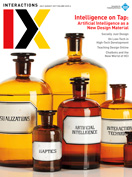Authors:
Casey Fiesler, William Aspray, Lecia Barker, Jed Brubaker, Laura Devendorf, Brian Keegan, Leysia Palen, Michael Paul, Danielle Szafir, Ricarose Roque, Rick Robinson, Amy Voida, Stephen Voida
What is a unique feature of your lab? The Department of Information Science at the University of Colorado Boulder (CU) is brand-new and small, so we have had the opportunity to make our space and processes highly collaborative. As such, our "lab" is an entire department! We have faculty and students working in areas that include computational social science, digital humanities, crisis informatics, digital identity, personal information management, philanthropic informatics, data ethics and policy, network science, machine learning, information visualization, and diversity and inclusion in STEM. One theme that cuts across some of our research (and serves to translate research into undergraduate education) is human-data interaction, as an expansion of human-computer interaction. We combine areas of expertise for the benefit of the classroom, Ph.D. student advising, and numerous research collaborations. In addition, the entirety of the faculty and Ph.D. student group is working together on a project to understand and promote the practice of human-centered data science across several academic disciplines at CU. Though we all have research agendas of our own, having a collective identity is important to our mission and our operations. We really do feel like a research group as much as a department.
How many people are in the lab, and what is the mix of backgrounds and roles? Information Science currently includes 13 faculty members, 13 additional courtesy faculty members, professional research staff, a dozen Ph.D. students, and a number of other graduate and undergraduate researchers. We are fortunate to have close connections to other departments and institutes on campus, so our student researchers come from all over—not only information science but also computer science, the Institute of Cognitive Science, the ATLAS Institute, communication, and journalism. The faculty also has diverse backgrounds, with training and degrees in communication, computer science, history, human-centered computing, journalism, law, math, and psychology. Since we value well-rounded researchers, it is rare for someone to have a single role in research projects. Students who build systems may also be doing empirical work, and it is common for someone to have a lead role on one project and a supporting role on the next.
As a department and research group, we are interested in pushing the boundaries of what information science can be.
 |
Our faculty and personnel practicing our mountain selfie skills. |
 |
Laura Devendorf works with prototypes from Steve Voida's research group. |
 |
Leysia Palen works with student researchers. |
Briefly describe a day in the life of your lab. As a new unit that is building its research portfolio, business processes, and even curriculum from scratch, every day is a little different, though there are patterns to the ways in which we work and collaborate. We have an open office plan with a number of huddle rooms for small meetings, and a large working and meeting space dubbed the Garage because of the rolling glass garage doors that can section off public space. Our huddle rooms are all named after Internet cats, and throughout the day you will come across ad hoc group meetings. Perhaps Steve Voida and some students are building prototypes in NyanCat while Danielle Szafir and Michael Paul consider visualizations of social-media health data in Keyboard Cat. Meanwhile, Jed Brubaker and Casey Fiesler are holding their research meeting in the Garage with students who are working on social-computing topics. It is common to find small groups of Ph.D. students working together on the expansive whiteboard in the grad cafe area—finding that spontaneous conversations often turn into new collaborations!
 |
A research showcase in the lab "garage." |
What is one feature of your lab that you could not do without? Our open space has been helpful in the development of a new unit where consultations between faculty, staff, and students can happen readily as issues are being decided, often for the first time. Aesthetically, the long sight lines across the space to the large bank of windows brings light throughout, while also allowing for people to identify places where they can work alone or together. The size of our space works well for a new department, but we are also looking forward to expanding our footprint as student and faculty enrollments grow to provide working spaces for different forms of information science education and research.
 |
A Ph.D. student showcases the Hololens he is using in visualization research. |
How would you describe how people interact in your lab? The environment is congenial and collaborative. The personnel and physical environment mutually reinforce our goals of establishing a new set of educational and research programs on our campus. We strive for a high degree of both cooperation and individuation that supports professional development and creates an organization with porous boundaries that welcomes many disciplines to its projects.
What is the one thing you see as most important about the work you do there? As a department and research group, we are interested in pushing the boundaries of what information science can be. By bringing many people together and surfacing as much as possible how different kinds of research are done, we strive to conduct projects that integrate multiple forms of expertise, methods, and analytic and design expression.
http://www.colorado.edu/cmci/academics/information-science
Copyright held by authors
The Digital Library is published by the Association for Computing Machinery. Copyright © 2017 ACM, Inc.








Post Comment
No Comments Found